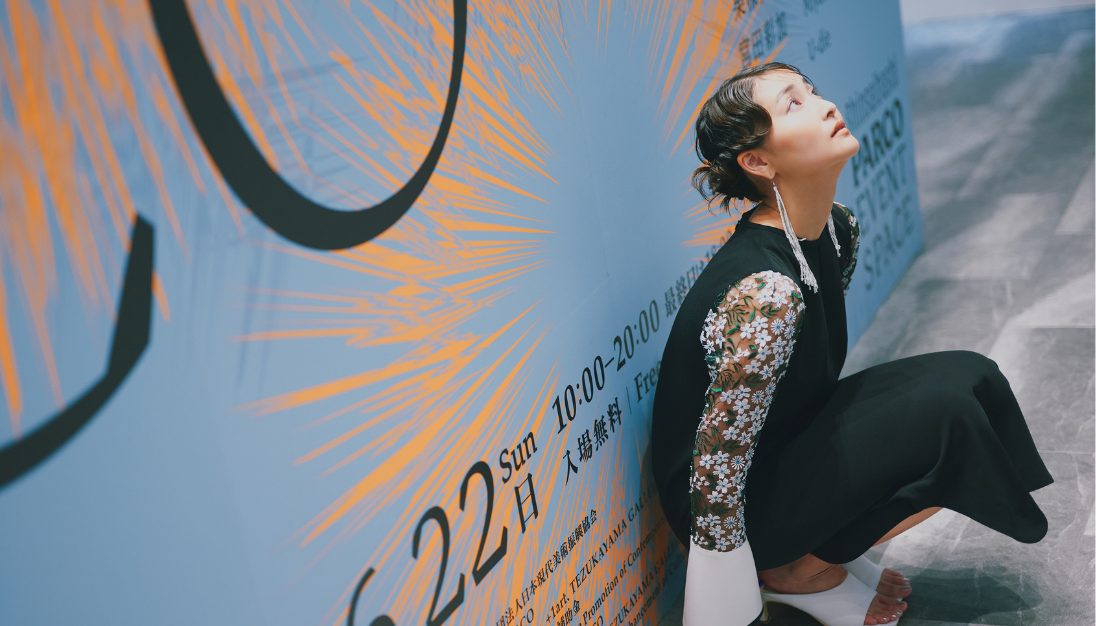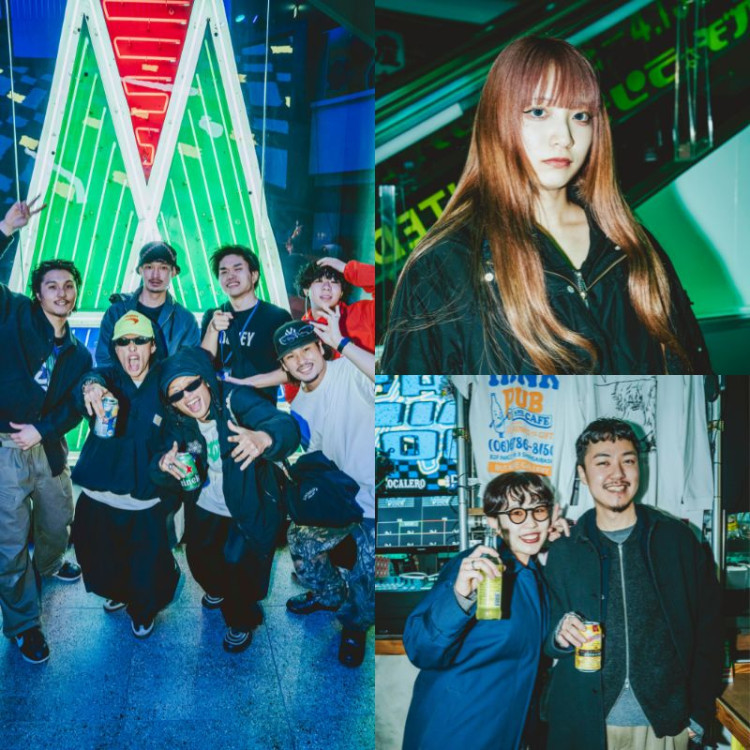ART&CULTURE / 2025.06.07
Ayaka Wada| QUI x Shinsaibashi PARCO Art Mikata (April 5)

There is no right way to appreciate art. But there are some tips to enjoy art more. Koho Suenaga, the author of "Art Thinking from the Age of 13" (Daiyamondosha), an art teacher who advocates "output appreciation" that explores new perspectives while freely expressing what I felt, is a series of art exhibitions with guests.
The fourth guest is singer and actress Ayaka Wada. We asked Mr. Wada, who majored in art history at university and studied art at graduate school, and asked for "Kansai Art Annual 2025 CO" (~ June 22) at Shinsaibashi PARCO.
-
PhotographKei Matsuura(QUI/STUDIO UNI)
-
StilingPARCO
-
HairMakeNatsuki Watanabe(Riina)
-
TextI'm sorry.
-
Art DirectionKazuaki Hayashi(QUI/STUDIO UNI)
-
EditSeiko Inomata(QUI)
-
ProduceShun Okabe(QUI)
This time, we had the author Ayaka Miyata listen to their outputs.

Miyata: Keywords that were always conscious of in production appeared in the words of the two people. For example, the word "life force" is a word that was incorporated into the title of past solo exhibitions.
And it is true that he said, "It can be caught as if it is rising or decaying." When you live a flower, you can use it in a symmetry with "flower arrangement". But "ikebana" can live in asymmetry. There are various theories for the reason, but the theory that "Japanese people feel beautiful not only when the flowers are open, but also how they decay and change their shape, so they calculate and grow up to the decay figure." I thought it was interesting. That's why I'm incorporating that element into my work.

Wada: Certainly, in Japanese culture, temples and Buddha statues are decaying, right? You may not recognize it as "decaying" in the first place.
Miyata: I think so. It's just like a flow of life.
Suenaga: That's why the feeling of life and the feeling of decay can coexist. On the other hand, was there something different from Mr. Miyata's idea?
Miyata: That's right.…When I talk about the technical part, the thread part is sewing machine embroidery.
My work is programming the data of sewing machine embroidery and adding "bugs" to it. I don't use any cloth at all, but I'm sewing it tightly with only thread.

Wada: Certainly, embroidery is basically something that sews on cloth like the clothes I wear today, isn't it?
Miyata: That's right. In addition, it is originally stitched with a uniform seam according to the cloth. In my work, I'm destroying it. In this work, we add a bug in the direction of "compressing" embroidery, and in the work selected by Mr. Wada first, we add a bug in the direction of "extending".
Earlier, it was said that "various colors are mixed," but since the sewing machine is sewn with the upper and lower threads, using different colors can create a gradient that can not be said.
By adding bugs to the data and creating them in a sewing way that cannot be done, new details are created.…I feel that it is close to the evolution of life and the sense of manipulation of genes. "Bug" is an act that should be an error and a failure, but it feels like new fun and values are born from it.

Wada: It's funny!
By the way, is the cloth part in the background of the work like the grandmother used in dressmaking? My grandmother is a hobby of dressmaking, and there are many cloths in the room, so I felt very familiar to me.
Miyata: That's exactly right! My grandmother, who died three years ago, was a hobby of patchwork and was collecting cloths from various countries and times. I grew up surrounded by that cloth, so cloth was like a pictorial book that imagined a country that I had never been, or a time when I had not lived, or a creature that I had never seen before.
Wada: For me, the cloth was in "daily life", so I felt it would be nice to become such a work.
Also, in Japan, I feel that I don't see much cloth with the pattern of these realistic creatures.

Miyata: It is a feeling that people born and raised in Japan can't imagine. In the end, I want to create something that feels like I can't make, so I want to incorporate these external elements.
Suenaga: There are also parts that are inspired by such external parts, such as errors or coincidences.
Miyata: That's right. Rather than configuring everything with my own intention, I would like to create something that incorporates bugs and coincidences.
Wada: Today, while watching the work, it was Miyata's work that I really liked first, so it was fun to talk about it! I'll go see you again.

Other Posts
Other Feature Articles
-

The Fashion Post × SHINSAIBASHI PARCO 2025 AW COLLECTION
2025.08.07
-

Hello New Season -2025 AW-
2025.08.07
-

LIVE REPORT & SNAP| Meet the featured artists! Playback of “Shinsaibashi PARCO presents FM802 Rockin’ Radio!”
2025.07.12
-

SNAP PHOTO| Infiltration of PARCO NIGHT OUT ’25, an all-night event commemorating the 4th anniversary of the Shinsaibashi Neon Shokudo Street! SNAP for the fashionable guys!
2025.04.12
